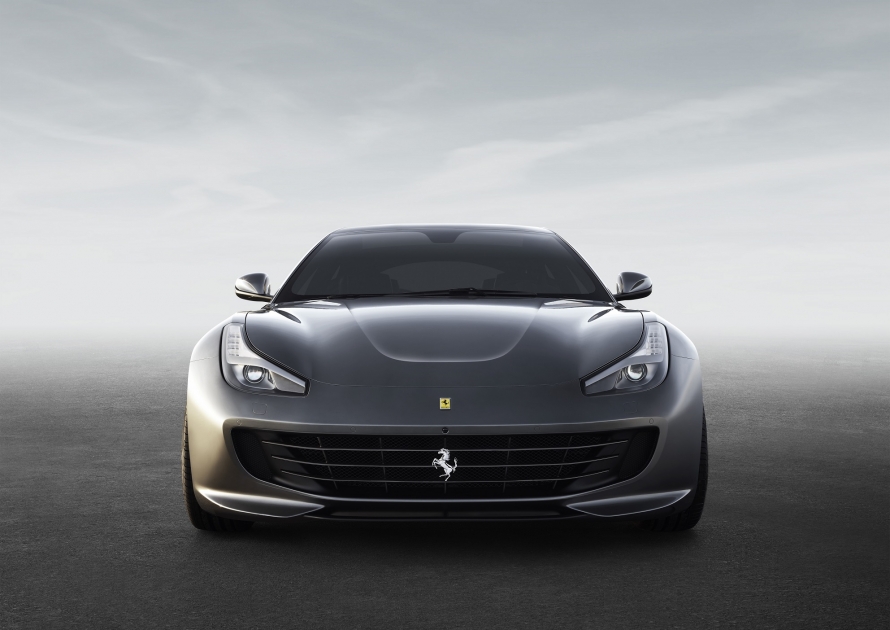
The GTC4Lusso: A contemporary vision of Ferrari's illustrious four-seater heritage
The new Ferrari GTC4Lusso is Maranello’s latest interpretation of the four-seater concept, which combines extraordinary performance in all driving conditions with sporty elegance and luxurious comfort for both driver and passengers alike.
The GTC4Lusso’s name references several illustrious predecessors, not least the 330 GTC or its 2+2 sister model, the 330 GT, as well as the 250 GT Berlinetta Lusso, which married extreme performance with stylish design and sophisticated materials and craftsmanship. It follows in the footsteps of the FF, the first ever Ferrari you could drive on rough terrain or take up mountains for a ski trip thanks to its predictive all-wheel drive system, and continues the lineage of Ferrari’s spacious 2+2 models that began with the 1948 166 Inter.
Ferrari has updated the grand touring FF with a stunning new interior, sharper exterior styling, improved engine and handling and a brand new name that reflects the luxury that epitomizes Ferraris’ flagship models. Here we take a moment to reflect on the most significant models that have shaped the history of Ferrari’s V12-engined four-seaters.
1948 166 Inter
The 166 Inter was Ferrari’s first ever road-going model and was based on the 166 sports racing models, such as the 166 MM barchetta, with which it shared a slightly lower-powered version of the sophisticated 2-litre V12. Typically for those years, no two cars were alike and one of the most popular coachbuilders of that era, Carrozzeria Touring, produced the majority of the model range, including this, the 166 Inter coupé Touring, which debuted at the 1948 Turin Motor Show. One of just five Ferrari cars sold that year, it was the first ever example of a two-door four-seater and thus the predecessor of today’s GTC4Lusso.
1960 250 GT 2+2
The 250 GT 2+2 was the first four-seater Ferrari to be produced in large numbers. In fact nearly 1000 cars were produced between the model’s launch at Le Mans 24 Hours in June 1960 and the end of 1963. Although there had been other Ferrari models designated 2+2s in the early 1950s, the 250 GT 2+2 was the first with proper four-seat accommodation and the concept proved to be extremely popular, accounting for about two thirds of the total Ferrari 250 GT road car production of the period. The Pinin Farina-designed car was equipped with the 3-litre version of the V12 producing 240 hp, with the last fifty examples being fitted with 4-litre engines and designated 330 America.
1964 330 GT 2+2
The 330 America was replaced by the 330 GT 2+2 coupé which was presented at the annual Ferrari pre-season competition press conference in January 1964, making its public appearance at the Brussels Salon later that month.
Characterised by its front-end styling that included large quad headlights emphasized by chrome surrounds, its Pininfarina styling was viewed favourably and the new 2+2 was considered to offer substantial improvements over its predecessor. In all, the model garnered much praise from the press at the time.
One of the most famous owners of the 330 GT 2+2 coupé was John Lennon of Beatles fame who was bought a model in 1965 by his band mates the day he passed his driving test.
1967 365 GT 2+2
The 365 GT 2+2 was presented at the 1967 Paris Motor Show, and was the replacement for the 330 GT 2+2. With its elegant, imposing lines, it was the first Ferrari to feature power steering and air conditioning as standard for the American market.
1971 365 GTC4
The 365 GTC4 was the successor to the 365 GT 2+2. The body style was very different from the models that it replaced: gone were the graceful rounded curves and the elliptical radiator grille, to be replaced by a much more angular wedge design, which was coming into vogue at the time. The more compact design of a two-seater coupé actually hid the fact the car had two small rear seats which had folding backs to increase luggage space.
1972 365 GT4 2+2
This was a brand new design from Pininfarina, which faced the task of developing a fast, svelte and elegant 2+2 powered by the classic 4.4-litre VI2 engine that would break with the more classical lines of the 1967 365 GT 2+2 and provide greater rear seat space than that car’s successor, the 1971 GTC4. The 365 GT4 2+2 model was announced at the 1972 Paris Salon, and continued in production until 1976, when it was replaced by the 400 series which maintained - right up until the final interpretation, the 1985 5-litre 412 which ended production in 1989 – the refined styling that exuded an air of sporting luxury.
1992 456 GT
The 456 GT took the luxury 2+2 coupé theme to new heights and saw Ferrari return to the front-engine concept for the first time since the 1968 365 GTB4. The all-new 65° V12 provided unprecedented flexibility and power.
Today: the GTC4Lusso
Along with a new name, Ferrari has given the GTC4Lusso, updated lines, a new interior, and a touch more horsepower from its V12 engine. The performance displays the thrilling Ferrari soundtrack, with an increased power output from 651 horsepower to 680 ponies. This Italian horsepower allows the GTC4Lusso to reach 0 to 62 mph in 3.4 seconds on the way to its 208 mph top speed.
Importantly, the all-wheel drive Ferrari now has four-wheel steering similar to that found in the F12 TDF. Allowing all four wheels to steer and propel the car forward makes the car turn as fast as it can accelerate.
The GTC4Lusso sports the latest evolution of the naturally-aspirated Ferrari GT V12 that melds incredible power with efficiency and provides a soundtrack which is thrilling in performance driving, yet discreet and harmonious in normal touring conditions, whether city, mountain or desert.


























